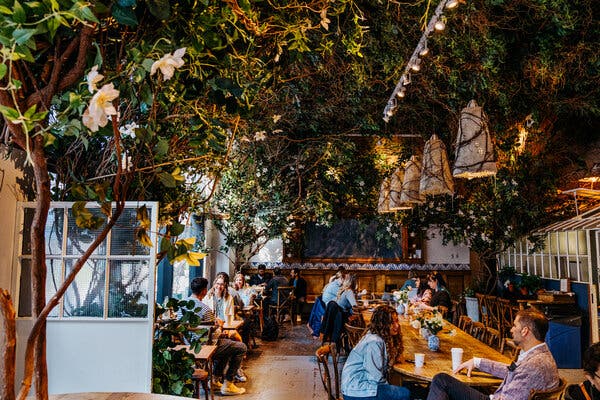They’re popping up all over the dining world: huge, elaborate arrangements of faux blossoms and plants — many of them the work of one enterprising man.
Marigolds don’t generally thrive in 30-degree weather. Yet on a cool March afternoon, they bloomed in golden bunches outside Bungalow, a new Indian restaurant in the East Village. The petals appeared perky and thriving, as did the man, Carlos Franqui, expertly twisting them into a colorful archway that crawled around the entrance.
How had Mr. Franqui so deftly defied nature? The question seemed to vex the many passers-by who stopped to gape. Then one woman bent down to take a sniff, and discovered the flowers’ secret: They were fake. So were most of the plants and elaborate flower arrangements throughout the restaurant. The camellia leaves framing the entrance? Polyester. The ficus in the vestibule? Plastic. The bright-pink roses on the tables? Real — and wilting.
Mr. Franqui, sporting thick-rimmed glasses and slicked-back hair, pointed an accusing, gold-painted fingernail at the roses. “Mine don’t droop,” he said.
Sprawling, towering, flamboyant installations of faux flowers and leaves are fast becoming a new hallmark of restaurant design, the florid successor to past fixations like open kitchens, Mason jars and those cordless tabletop lamps. In the last few years they’ve sprung up across the United States and in cities like London, Paris, Toronto and Lagos, Nigeria. They form soaring arches, climb up dining room walls and send their tendrils deep into social media, where they brighten many a weekend-brunch post.
What began as a pandemic-era solution for dressing up outdoor dining sheds has now outlasted plexiglass dividers and QR codes to become its own maximalist design movement, with Mr. Franqui as a chief trendsetter.
Thank you for your patience while we verify access.
